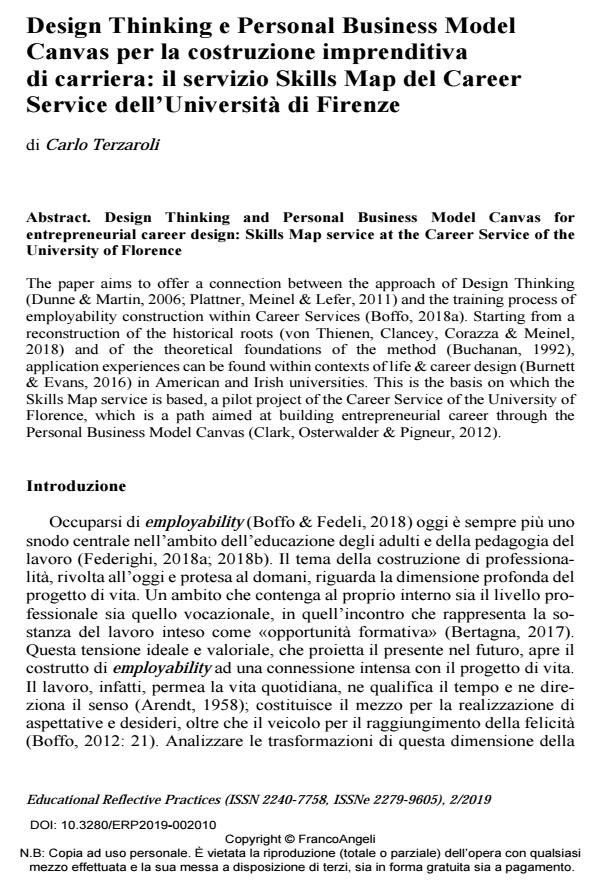Design Thinking and Personal Business Model Canvas for entrepreneurial career design: Skills Map service at the Career Service of the University of Florence
Journal title EDUCATIONAL REFLECTIVE PRACTICES
Author/s Carlo Terzaroli
Publishing Year 2020 Issue 2019/2
Language Italian Pages 33 P. 177-209 File size 672 KB
DOI 10.3280/ERP2019-002010
DOI is like a bar code for intellectual property: to have more infomation
click here
Below, you can see the article first page
If you want to buy this article in PDF format, you can do it, following the instructions to buy download credits

FrancoAngeli is member of Publishers International Linking Association, Inc (PILA), a not-for-profit association which run the CrossRef service enabling links to and from online scholarly content.
The paper aims to offer a connection between the approach of Design Thinking (Dunne & Martin, 2006; Plattner, Meinel & Lefer, 2011) and the training process of employability construction within Career Services (Boffo, 2018a). Starting from a reconstruction of the historical roots (von Thienen, Clancey, Corazza & Meinel, 2018) and of the theoretical foundations of the method (Buchanan, 1992), application experiences can be found within contexts of life & career design (Burnett & Evans, 2016) in American and Irish universities. This is the basis on which the Skills Map service is based, a pilot project of the Career Service of the University of Florence, which is a path aimed at building entrepreneurial career through the Personal Business Model Canvas (Clark, Osterwalder & Pigneur, 2012).
Carlo Terzaroli, Design Thinking e Personal Business Model Canvas per la costruzione imprenditiva di carriera: il servizio Skills Map del Career Service dell’Università di Firenze in "EDUCATIONAL REFLECTIVE PRACTICES" 2/2019, pp 177-209, DOI: 10.3280/ERP2019-002010